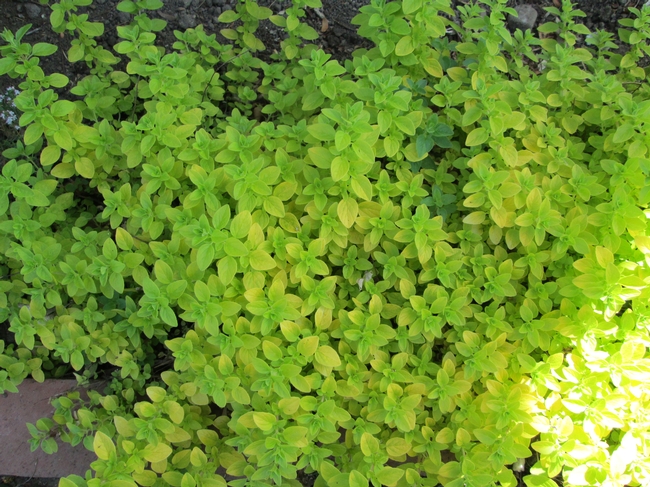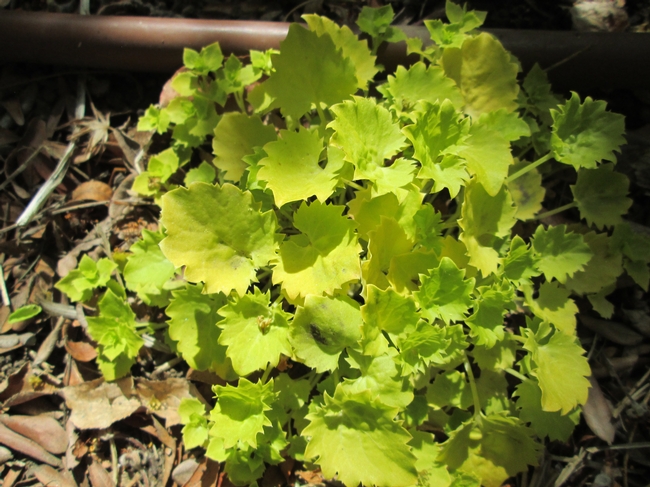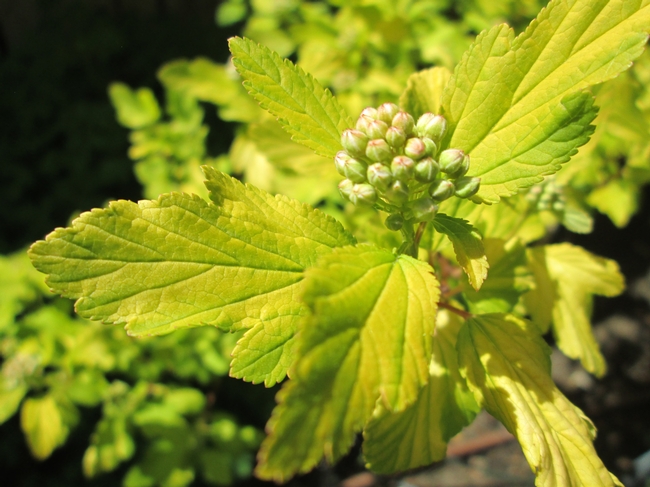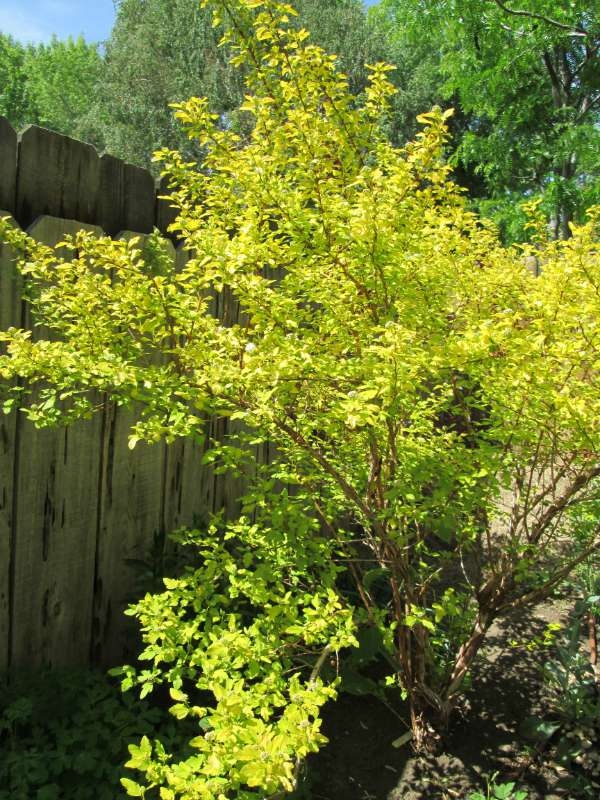Part I: Chartreuse and gold-leaved plants.
Why wait until fall to enjoy spectacular leaf colors? There are plenty of plants that burst forth in spring with leaves of different hues adding interest to the garden while we wait for summer blooms.
The following plants are hardy to USDA Zone 7 and perform reliably in most of the Owens Valley.
I am particularly fond of chartreuse foliage to add a cheerful splash of color to borders. One of the best shrubs is the Ninebark, Physocarpus opulofolius ‘Darts Gold' which has much to offer. Sending out arching branches covered in brilliant citric-green leaves, numerous clusters of pollinator-friendly white flowers clothe it in spring, followed by red berries. The exfoliating bark also adds interest in winter. It will tolerate dry soils but does best with regular water. It is a fast grower, and the branches can be cut and used in flower arrangements.
There are numerous cultivars of Spirea with similarly colored foliage; Golden Elf, Lime glow, or Spiraea x bumalda 'Goldflame' which grows as a compact mound of foliage, topped by clusters of fluffy dark pink flowers, eventually followed by coppery-orange fall foliage.
Berberis thunbergii ‘Golden Rocket' (Barberry) is an upright shrub with bright golden foliage that turns to more orange shades in fall.
Little Honey oakleaf hydrangea (Hydrangea quercifolia 'Little Honey') is a yellow leaved sport of the more common variety of this plant. For the best color it requires morning sun, but will not perform well if exposed to afternoon rays.
Sambucus racemosa Lemony Lace™ is an elderberry with bright yellow/green feathery leaves suitable for zones 4-7, so could be grown in the cooler aspects of the Sierra's Eastside.
Another effective bright chartreuse herbaceous plant is Agastache foeniculum 'Golden Jubilee'. This is a perennial which produces mounds of brilliant spring foliage from which develop stems to about 3' during the summer. These are topped with spikes of blue flowers which attract bees and hummingbirds. The foliage has a delightful licorice-odor when brushed or crushed, giving rise to its common name of Anise hyssop. It is said to be deer resistant too.


For a lower growing ground cover in the same color-range it is hard to beat Golden oregano, Oreganum vulgare 'Aureum'. This herb does double duty since it can be used as a culinary flavoring too.
Campanula "Dixon's Gold" can be used as a small scale ground cover, its typical campanula-blue flowers contrasting nicely with the foliage.
Modern plant breeding has resulted in many new varieties ofherbaceous plants and annuals with brilliant gold or lime green foliage: Hosta "Twist of lime", Heuchera "Citronelle" or "Lime Rickey" and Coleus 'Electric Lime' , as well as grasses such as the Japanese forest grass Hakonechloa macra 'All gold'.
If you are looking for a substantial tree 'Chief Joseph' Lodgepole Pine (Pinus contorta var. latifolia 'Chief Joseph') might be worth considering, although it is dull green during much of the year it becomes a brilliant gold in winter.
These plants form striking contrasts with other foliage colors such as burgundy and dark greens, or with flowers in the purple/blue hues. In a desert environment they make a welcome change from the grays and dull greens of the natural vegetation while in more wooded settings they can liven up a dark corner.
A word of warning: Don't overdo these colors or they will tend to lose their striking impact, or even worse your borders may give the impression that they are seriously deficient in nitrogen!

